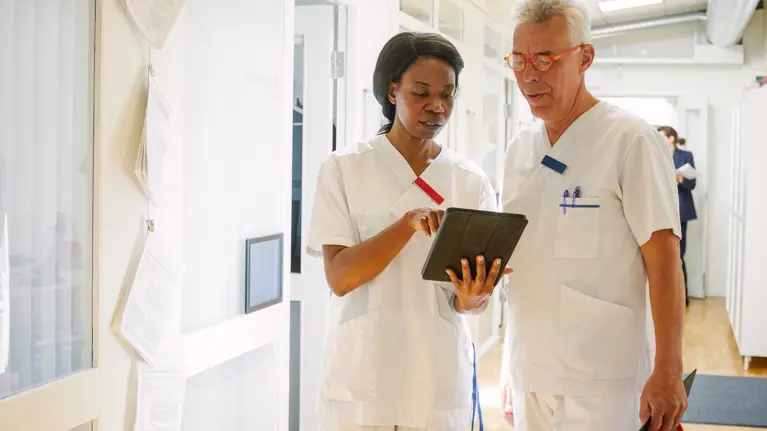
Increasing healthcare sector’s performance
Lifecare functionalities, such as the renewed medication solution, simplify day-to-day work

Head of data-driven care
The challenge
Need for upgrading the healthcare information system version for better usability and new features to improve care and productivity.
The solution
About the customer
Benefits
Streamlining work with new features
Among of other major usability improvement Lifecare’s renewed medication module improves workflow and maintain patient medication lists locally and in synch with national repository.
Simple and easy to use
Healthcare professionals use a significant portion of their worktime with documenting the care. Therefore, it is vital that the system does not put any additional strain on the user.
A platform that enables development
Lifecare is up to speed on the latest developments in healthcare and technology. It is a platform that enables integration to existing systems and innovation of new features.
Effiective onboarding ensures smooth deployment
Lifecare was deployed in the Hospital District of South Ostrobothnia in November, 2019. South Ostrobothnia’s primary and specialized healthcare have been using a joint patient record system for a couple of years now.
”Life would be very difficult otherwise. When a patient has visits a healthcare center, the patient data from the visit updates in real time and can be found with just two clicks. If this system wasn’t in place, we’d have to use the national Patient Data Repository, to which data registers days, sometimes even weeks, later.”, Hemminki explains.
The system renewal required onboarding the entire personnel of the hospital district. Trainings were organized in late summer and early fall.
“We entered data for test patients in the test environment. There were no lectures, just learning by doing.”, Hemminki commends the trainings.
”High-quality training is a prerequisite for successful system renewal.”
ophthalmologist, Chief Medical Information Officer, EPSHP
Better software saves time for patient work
Antti Hemminki works as an ophthalmologist in the Seinäjoki Central Hospital and acts as the Chief Medical Information Officer for the Hospital District of South Ostrobothnia. Hemminki represents the end-user and forms a link between the user and the IT department. In addition, Hemminki contributes to different development projects. Currently he is looking into how AI could be used in healthcare.
When Lifecare was deployed, the personnel co-planned the trainings. Hemminki contributed to the trainings by considering the onboarding needs of the Ophthalmology Centre.
Healthcare professionals use a significant portion of their workday using software.
“Personally, for every half an hour of patient-time, I spend 10 minutes using Lifecare. And worktime reserved for clerical tasks is not even included in that. I have no problem reaching the daily screen time limit.”, Hemminki says.
According to Hemminki, the functionality of a software becomes evident when examining how much time the system allows for patient work. Entering and retrieving patient data should be as easy and fast as possible.
New features simplify day-to-day work
Hemminki commends the renewed medications section, which has simplified and expedited work.
”Maintaining medication list used to take a lot of time. Now, the adding and removing of medications works fluently. Also, keeping medication lists updated for the national Prescription Center seems more useful now.”
The healthcare information system produces considerable amounts of data, and Hemminki is looking forward to seeing efficient solutions for managing the data. Speech recognition is one of the features of Lifecare that significantly expedites and streamlines data entry. The Hospital District of South Ostrobothnia and TietoEVRY have already had preliminary discussions about deploying speech recognition.
“Speech recognition is certainly very popular now and it will probably be taken into use in the near future", Hemminki reckons.
”Every doctor wants the computer to take up as little time as possible.”
ophthalmologist, Chief Medical Information Officer, EPSHP


